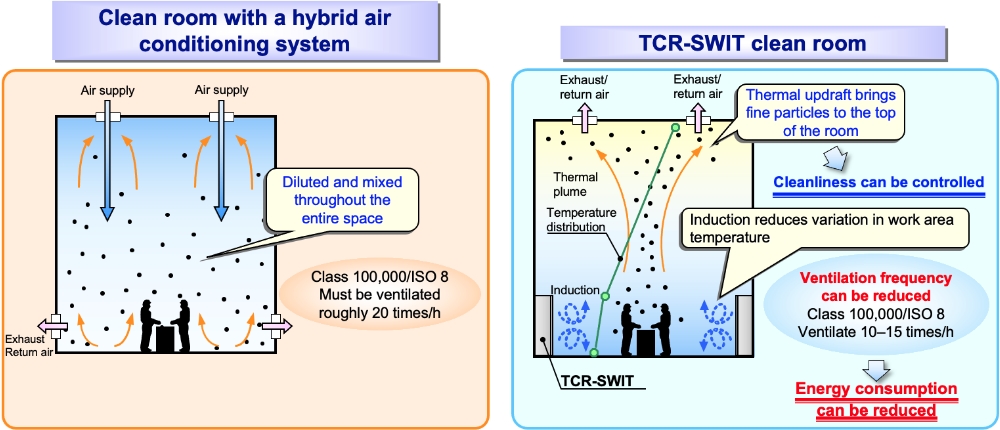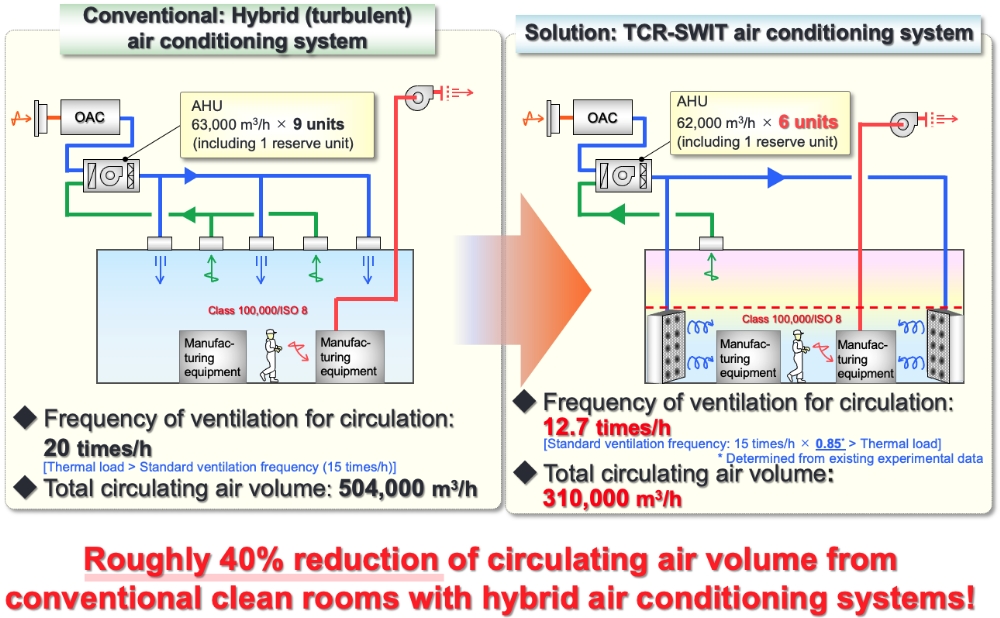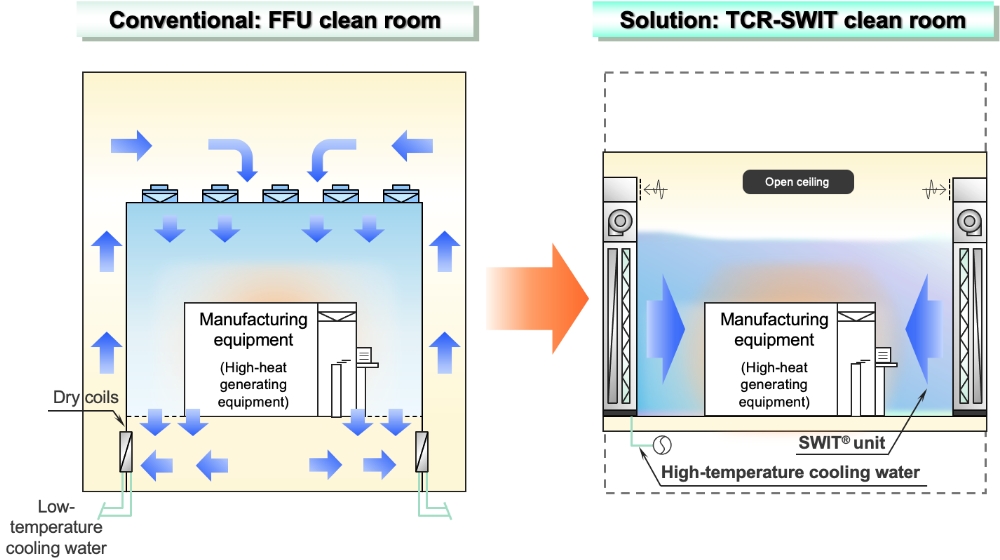TCR-SWIT® Swirl Inducing-Type Stratified Air Conditioning Systems for Clean Rooms




Saving energy, reducing CO2, and cutting costs,
and building high-precision environments on short schedules
Clean rooms for semiconductor manufacturing require highly precise, consistent control of temperature, humidity, and cleanliness (particles and gaseous contaminants) to achieve ultrafine precision machining with high yields.
TCR-SWIT® is an air conditioning system that applies SWIT®—a swirl inducing-type stratified air conditioning system that takes advantage of the fact that cold air sinks and warm air rises—to clean room manufacturing environments (for temperature and cleanliness control).
TCR-SWIT®: Takasago Clean Room Swirling Induction Type
Patent No. 5361140, Patent No. 6636859,
Patent No. 6878552, Patent No. 6909850,
Patent No. 7068261, Patent No. 7311292,
Patent No. 7332289, Patent No. 7332290, etc.
Features
- Makes it possible to reduce energy consumption while maintaining cleanliness of clean rooms with conventional hybrid air conditioning systems
- Maintains cleanliness of Class 1000 (@0.5 μm)/ISO 6 clean rooms
- Can significantly reduce energy consumption and installation costs for air conditioning equipment (transport, heat source) compared to clean rooms with conventional hybrid air conditioning systems
System overview
A large volume of cold air is supplied to the room from the distinctly shaped vents in swirling current form while inducing the surrounding air, lowering the vent output and bringing the vent temperature closer to room temperature than conventional systems. Also, suspended particles rise to the top of the room with the air warmed by the heating element and are discharged, thus maintaining the same level of cleanliness as conventional clean rooms with hybrid air conditioning systems.

Case study 1
Comparison with conventional clean rooms with hybrid air conditioning systems

Case study 2
Comparison of FFU and TCR-SWIT® systems

Relevant Links
SWIT® Swirl Inducing-Type Stratified Air Conditioning System
- Top
- Technology & Services
- TCR-SWIT®
Swirl Inducing-Type Stratified Air Conditioning Systems for Clean Rooms